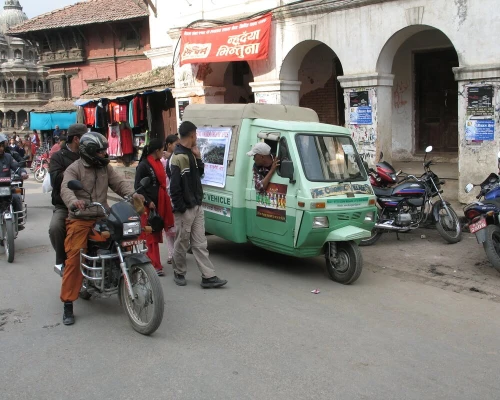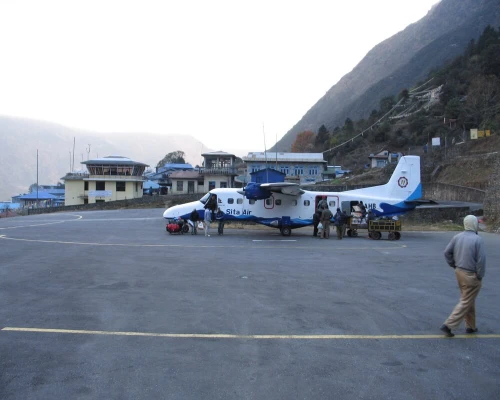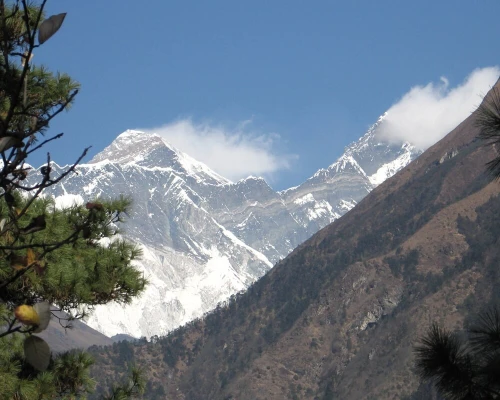Everest View Trek is a nine-day hiking experience that offers a remarkable opportunity to witness the majestic beauty of the Khumbu Himalayan range. Despite its shorter duration, this trek provides a breathtaking glimpse of some of the most awe-inspiring peaks in the Everest region. As you traverse the trail, you'll be treated to panoramic views of renowned mountains such as Mt. Nuptse (7,855m), Mt. Lhotse (8,516m), Mt. Kongde (6,011m), Mt. Cholatse (6,335m), and Khumbila (5,761m), among others. These towering peaks create a dramatic backdrop against the clear blue sky, leaving you in awe of the sheer magnificence of the Himalayas.
While the focus of the trek is on experiencing the beauty of the Everest region, there are also opportunities to encounter rare and stunning wildlife along the way. Keep a keen eye out for the Eurasian Kestrel, Golden Eagle, Yellow-billed choughs, and the Tibetan snowcock, as these fascinating birds soar through the mountainous landscapes. Additionally, at lower altitudes, you may come across the elusive squawking deer, adding to the enchantment of your journey. Spotting these creatures may require patience and sharp observation skills, but the reward is witnessing these unique and beautiful animals in their natural habitat.
Furthermore, the Short Everest View Trek offers glimpses of the majestic Mountain Thar and graceful Musk Deer. These encounters with wildlife add to the uniqueness and diversity of your adventure, providing you with unforgettable memories of the natural wonders of the Everest region. Whether you choose to embark on this trek alone or with a loved one, the Short Everest View Trek promises to be an extraordinary journey. It showcases the best of Everest's natural beauty, from the awe-inspiring peaks to the rare wildlife that calls this region home. Prepare to be captivated by the stunning landscapes, immerse yourself in the tranquility of the mountains, and create lasting memories of this remarkable experience.
An exceptional hike beneath the treetops in which animals can be seen running freely with the glimpse of the finest and the highest peaks in the world with a group of friends and family.
- Embarking on a trek to the Everest region offers a once-in-a-lifetime opportunity to witness the majestic beauty of the world's highest peak, Mount Everest. This awe-inspiring journey will take you through breathtaking landscapes and provide you with panoramic views of the Himalayan range.
- During your trek, you will have the chance to visit the ancient Tengboche monastery, a significant spiritual center in the Everest region. The monastery holds deep cultural and religious significance, and exploring its tranquil surroundings is a truly enriching experience.
- The Everest region offers a brief yet adventurous trip that promises unforgettable memories. From traversing challenging terrains to crossing suspension bridges and encountering unique wildlife, each day of the trek presents new and exciting experiences.
- Immersing yourself in the Sherpa culture is another highlight of this journey. Interacting with the warm and hospitable Sherpa people will give you insights into their rich traditions, customs, and way of life. It's an opportunity to appreciate their resilience and deep connection with the mountains.
- Before commencing the trek, you will have the chance to explore the vibrant city of Kathmandu, home to several UNESCO World Heritage sites. These ancient sites, including temples, palaces, and shrines, showcase the city's rich history and cultural heritage.
- The adventure begins with a striking flight to the Lukla Airport, known as one of the most scenic and thrilling airports in the world. The flight itself offers stunning views of the Himalayas, setting the tone for the remarkable journey ahead.
- Overall, this trek to the Everest region combines natural beauty, cultural immersion, and exhilarating experiences, making it a truly unforgettable adventure.
Essence of Everest View Trek
One of the major highlights of the Short Everest View trekking adventure is the breathtaking Sagarmatha National Park. This pristine wilderness in the Khumbu region offers a remarkable exploration of diverse landscapes. As you trek through the park, you'll pass through enchanting forests of pine and rhododendron, traverse terraced fields and meadows, climb ridges adorned with deodar and fir trees, and ascend to awe-inspiring viewpoints where the entire Himalayan range seems to unfold before your eyes. The natural beauty of this national park is truly awe-inspiring and will leave you in awe of the wonders of the Himalayas.
However, the Everest View Trek offers more than just the splendor of its alpine scenery. It also provides a unique opportunity to encounter the Sherpa people, who have made these mountains their home for generations. Scattered across the Khumbu region, Sherpa villages offer an authentic glimpse into their rich culture and way of life. From the warm hospitality of the locals to their vibrant festivals and traditional practices, interacting with the Sherpa people will undoubtedly leave a lasting impression on you.
The trek culminates in Namche Bazaar, a historical trading center and the Sherpa capital of the region. This bustling town is a melting pot of Sherpa culture, where you can immerse yourself in the lively atmosphere, explore local markets, and engage in cultural exchanges with the friendly residents.
Another remarkable aspect of the Everest View Trek is the opportunity to learn about the traditional form of Tibetan Buddhism practiced in these mountains. A special highlight of the journey is a visit to the Tengboche Monastery, the most significant religious institution in the region. Here, you can witness the monks in prayer, experience the serene ambiance of the monastery, and gain insight into the spiritual beliefs and practices of the Sherpa people.
Everest View Trek Route
The Short Everest View Trek itinerary begins with a scenic 35-minute flight from Kathmandu to Lukla. Upon arrival at the Tenzing Hillary Airport in Lukla, you will be greeted by a knowledgeable guide from Nepal's Nomad trek team. They will assist you in sorting out the necessary equipment for the trek.
The trek commences, leading you through picturesque Sherpa villages such as Ghat, Chaurikharka, and Namche Bazaar. Namche Bazaar, situated at an altitude of 3,440 meters, serves as the Sherpa capital and a vibrant hub. Here, you will spend a day acclimatizing and exploring the charming surroundings. It's an excellent opportunity to experience the local culture, interact with the Sherpa people, and appreciate the unique atmosphere of the town.
Afterward, the journey continues towards renowned Sherpa villages such as Phortse (3,950m) and Khumjung (3,790m). As you trek through these villages, you will be treated to magnificent views of the Everest region, with its towering peaks and stunning landscapes. The highlight of this leg of the trek is a visit to the Everest View Hotel, where you can revel in panoramic vistas of Everest and its neighboring mountains.
Next, the itinerary takes you to the ancient Tengboche monastery. This significant religious institution offers a chance to witness Buddhist monks in their daily rituals and immerse yourself in the serene ambiance of the monastery. You can also indulge in a cup of traditional butter tea, a local specialty.
Finally, the trek concludes in Lukla, completing the remarkable circuit. You will have traversed through picturesque landscapes, experienced the warmth of Sherpa hospitality, and soaked in the beauty of the Everest region. The Short Everest View Trek also offers the option to include the Everest View Hike, which can be completed within a week. This extension is perfect for adventure enthusiasts and nature lovers who appreciate the gentle caress of cool mountain winds and the splendor of the natural environment.
Best Season for Everest View Trek
The best time of year to undertake the Short Everest View Trek aligns with the optimal seasons for the Everest Base Camp Trek. Nepal's weather is characterized by variability, with trekking seasons typically influenced by the arrival of the summer monsoon. To avoid the wettest conditions, many trekkers choose to travel during the spring season, which spans from February to March. During this time, you can enjoy blooming wildflowers and comfortable temperatures, making it a delightful time to embark on the trek.
Alternatively, the autumn season, from September to November, is another popular choice for the Everest View Trek. This season offers crisp days and clear mountain views, providing stunning vistas of the Khumbu region. The favorable weather conditions make autumn an excellent time to experience the trek's beauty.
Winter treks are also a possibility for those who enjoy the allure of the Khumbu without the crowds. Although temperatures can be cold, and trails may be covered in snow, the serenity and tranquility of the region during this season hold a distinct charm. Winter treks offer a unique and peaceful experience in the Himalayas.
While the summer monsoon season, which occurs from June to August, presents challenges for trekking due to heavy rainfall, Alpine Ramble Treks can arrange suitable adventures during this time as well. They can assist in planning alternative routes or activities that align with the weather conditions.
Ultimately, the choice of when to undertake the Short Everest View Trek depends on personal preferences and priorities. Whether you prefer the colorful blossoms of spring, the clear views of autumn, the tranquility of winter, or are open to an adventure during the monsoon, Alpine Ramble Treks can provide suitable arrangements and assistance throughout the year.
Everest View Trek Difficulty
Prior trekking experience is not required to undertake the Short Everest View Trek. Most travelers in reasonable health and fitness levels will be able to complete this itinerary without serious difficulty. However, it's important to note that the trek does reach a maximum altitude of approximately 3,700 meters, where altitude sickness symptoms can occur.
To ensure a safe and enjoyable trek, it is recommended that you are in good overall health and physical fitness before embarking on the Short Everest View Trek. Engaging in regular exercise such as walking, running, or other cardiovascular activities can help prepare your body for the demands of trekking in the high-altitude Khumbu region.
During the trek, an experienced guide from Alpine Ramble Treks will be assigned to accompany and assist you. They will closely monitor your progress and condition throughout the journey, providing guidance, support, and ensuring your safety in Nepal's stunning alpine environments.
It is also essential to listen to your body and pay attention to any signs of altitude sickness, such as headache, nausea, dizziness, or shortness of breath. If you experience any symptoms, it's important to communicate with your guide, who can provide appropriate guidance and make necessary adjustments to the itinerary to ensure your well-being.By being in good health, engaging in pre-trek fitness activities, and relying on the expertise of your guide, you can have a safe and fulfilling experience on the Short Everest View Trek.
Why Us for Everest View Trek
Nepal Nomad is a trusted and dedicated adventure service provider with over 21 years of experience. Our team consists of experienced mountaineers, knowledgeable guides, and reliable porters who prioritize the safety and comfort of their nomadic travelers. We handle all logistical responsibilities and are equipped to handle unforeseen circumstances during the trek. Privacy and safety are of utmost importance to Nepal Nomad, and they maintain high standards in these areas. We offer tailor-made options to cater to individual preferences and ensure a memorable journey. Choose Nepal Nomad as your companion for the Short Everest View Trek and embark on an incredible adventure with confidence.










